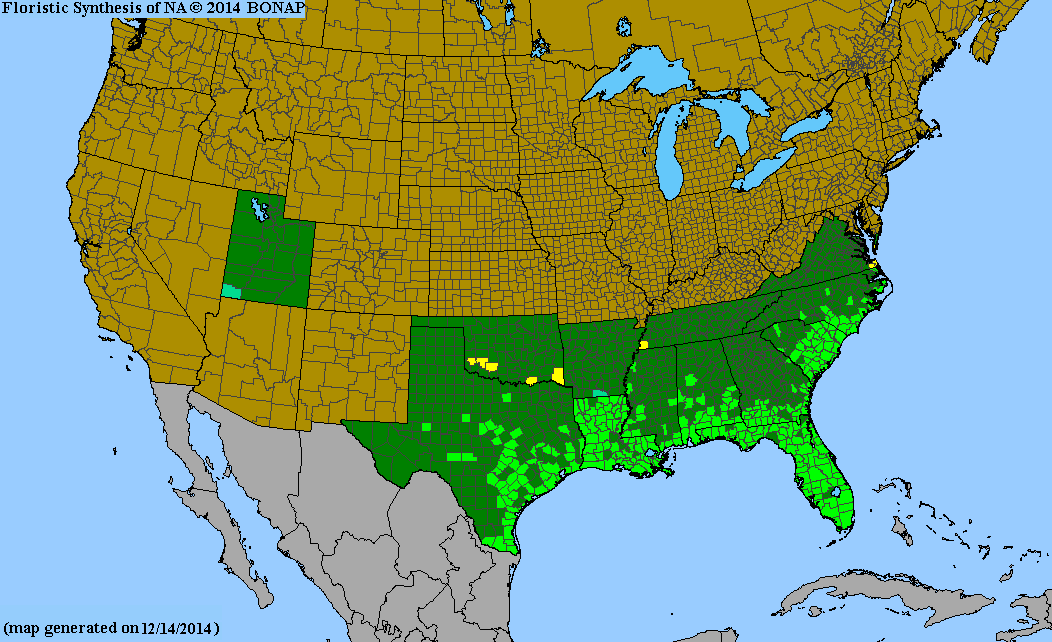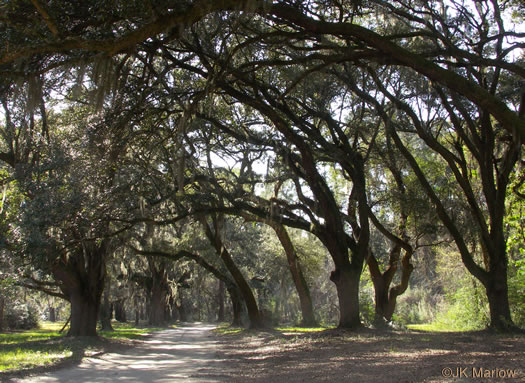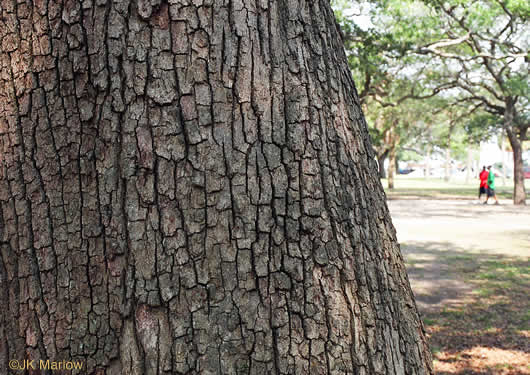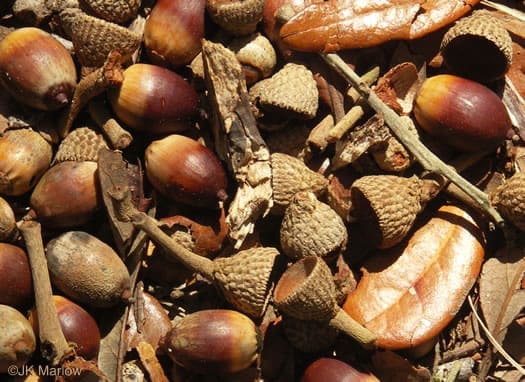Fagaceae
live oak
Quercus virginiana
Other Common Names
southern live oak, coastal live oak
Plant Type
Large Tree (greater than 25 ft)
Life Cycle
Perennial
Typical Size
40-80 ft. tall
30-100 ft. wide
Tolerant of
Drought, Occasional Flooding, Salt Exposure
Inolerant of
Poorly Drained Soil
Propagation
By seed
Plant Propagation Notes
No pretreatment is required.
Plant Planting Notes
Plant in wide open area with plenty of room to accommodate the wide open canopy spread.
Plants/Diseases
No significant disease or pest issues.
Wildlife Benefits
Host plant for butterfly larvae, Supports numerous caterpillars (bird food)
Leaves
Leaves alternate, oblong with entire margins. Hairy underneath.
Flowers
Male flowers on catkins.
Fruit
Acorn.
Bark
The furrowed bark is dark brown to red/burgundy.
Toxicity
Low toxicity if ingested.

USDA Hardiness Zones
8, 9, 10
Light Exposure
Full Sun, Part Sun/Shade
Soil Moisture
Dry, Medium, Moist
Soil Drainage
Well-drained
Soil pH
Acidic (less than 6.0), Neutral (6.0-8.0)
Native in South Carolina?
Yes
Plant Native Habitat
Maritime forest and scrub, barrier islands.
Global Conservation Status (NatureServe)
Secure (G5)
Federal Conservation Status (USFWS)
Not Listed
Distribution Notes
Common in the coastal plain.



